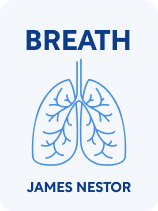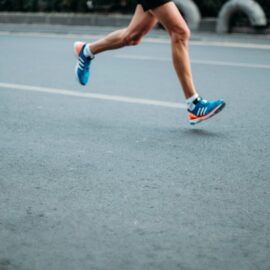

This article is an excerpt from the Shortform book guide to "Breath" by James Nestor. Shortform has the world's best summaries and analyses of books you should be reading.
Like this article? Sign up for a free trial here.
What role does breathing play in the regulation of bodily functions? How can the control of breathing be used to tap into the body’s latent capabilities?
As scientists work to better understand the ways that breath regulates our body’s functions, practitioners of ancient traditions have used breath to control the body for thousands of years. In many cultures, breath is believed to be the energy of life, an energy that can be manipulated to spectacular effect.
In this article, we’ll explore the nature of these beliefs using the example of Swami Rama, whose amazing, breath-induced control of his body was documented by scientists in a 1970 study.
The Breath of Life
Sages and healers in India and China identified breath—known as prana to students of yoga—as the energy of life as many as 3,000 years ago. The practices of yoga go back further still, to images passed down from the Indus Valley civilization dating 5,000 years before the present, although yoga’s early forms were not as they are today. While modern yoga emphasizes movement and poses, ancient yoga focused on sitting and breathing.
(Shortform note: Although modern yoga has been heavily secularized, its roots lie in ancient Hindu traditions. According to the Hindu Upanishads, prana is not just the life force inside us, but is also the life force of the universe itself. The control of breathing in yoga, pranayama, employs several different breathing techniques which, when combined with meditation, have documented physiological and psychological benefits.)
In these practices, breath is the process by which prana—the life force—is built up and distributed throughout the body. Yogic masters are reportedly able to move and manipulate the energy of prana inside them. Science has never established prana’s existence, though scientists at the Menninger Clinic made intriguing observations in 1970. They subjected a yoga teacher named Swami Rama to a battery of tests, during which he was able to consciously alter his heartbeat, body temperature, and even his brain waves, all through the power of controlling his breath.
(Shortform note: As Nestor notes in his bibliography, the results of the observations made on Swami Rama were reported in the New York Times in 1971. However, there has been little follow-up to corroborate the results of the Menninger Clinic’s experiments. Additionally, throughout the 1970s and ’80s, several women came forward to accuse Swami Rama of sexual misconduct, as well as fraud and acts of misrepresentation, tarnishing his credibility as a spiritual leader.)
No solid theory has been able to explain how Swami Rama was able to perform these feats, though Nestor suggests that the most plausible guess has to do with how oxygen affects the flow of electrons through the body. Many mysteries remain about how breath drives the body, and much research remains to be done. However, Nestor strongly asserts that how we breathe dictates how well we live and deserves as much attention as any other vital part of our lives.
(Shortform note: In his discussion of prana, Nestor characterizes it as a form of energy, in keeping with the terminology used by yogic practitioners. Scientists often object to the way mystics and meditative experts use the word “energy” to describe what can appear to be purely imaginary forces, but the problem arises because even in science, the concept of energy is especially hard to define. In our bodies, energy is stored in the molecular bonds of glucose and released through various chemical interactions. If yogic practices are truly able to manipulate energy in the biochemical sense, it must therefore be through using the breath to trigger unconscious chemical processes.)

———End of Preview———
Like what you just read? Read the rest of the world's best book summary and analysis of James Nestor's "Breath" at Shortform.
Here's what you'll find in our full Breath summary:
- Why you're probably breathing wrong
- The benefits of learning how to breathe properly
- The potentially dangerous side effects of mouthbreathing






